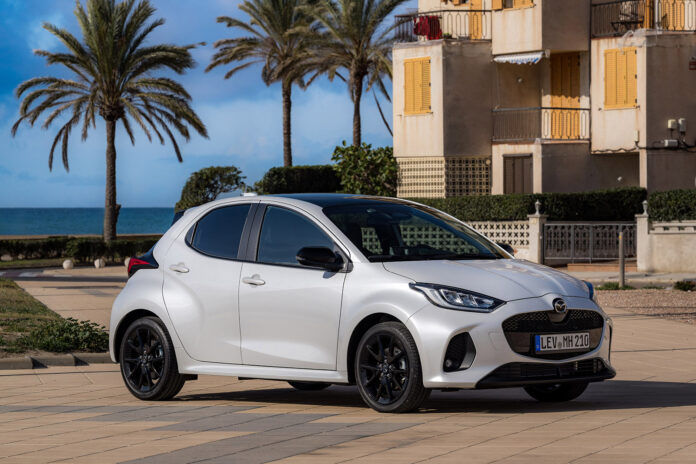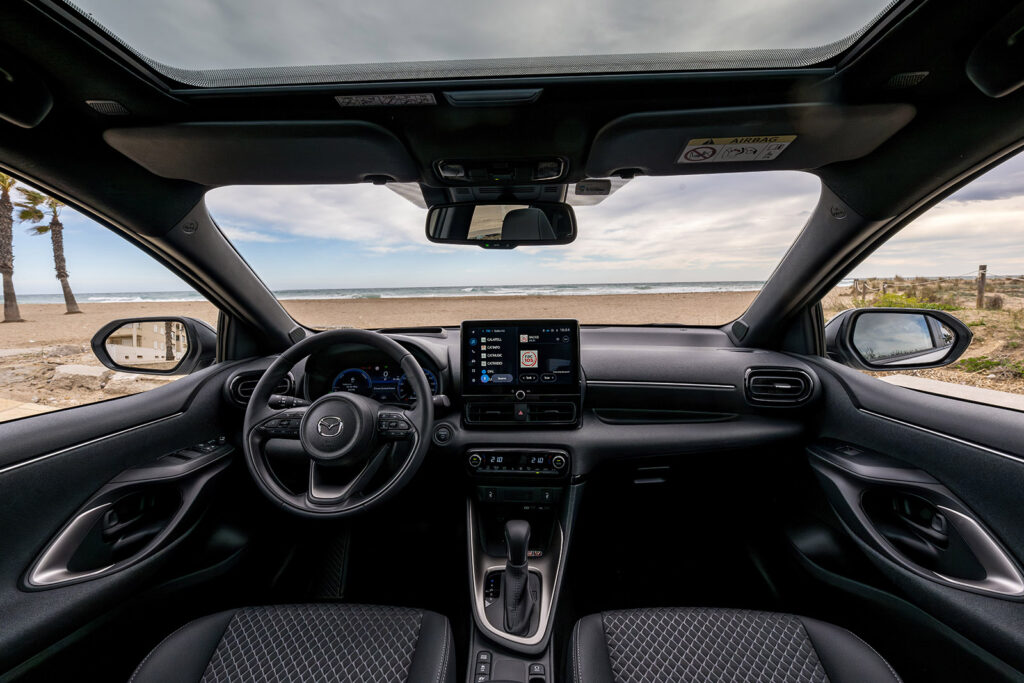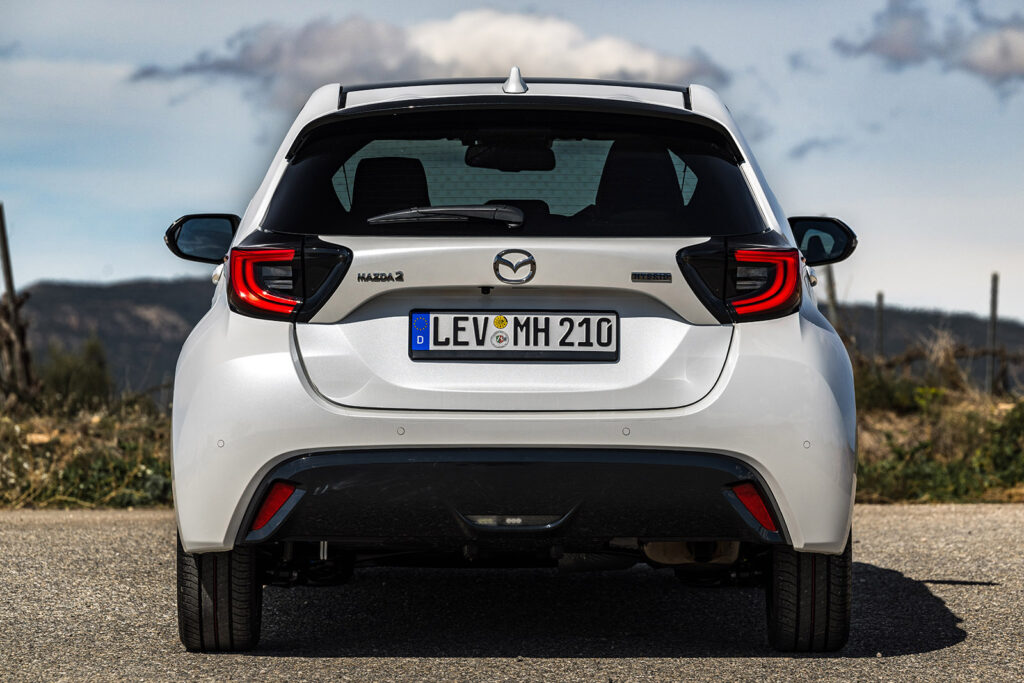
Bringing self-charging full hybrid powertrain technology to the Mazda model range, the Mazda2 Hybrid[1] is the outcome of a long-standing collaboration between Mazda Motor Corporation and Toyota Motor Corporation. The two companies entered a long term partnership in 2015.
Since then they jointly develop technologies for electric vehicles, connected-car technology, collaborated on advanced safety technologies, and expanded complimentary products. Job one production of Mazda’s re-designed, compact, hybrid vehicle for the European market started on the 15th of January 2024 in Onnaing, France.
The self-charging Mazda2 Hybrid is the perfect car for city life: with its expressive lines, attractive proportions, and compact size, it feels right at home in an urban setting – and is ready for any outer-city adventure. The newly introduced Mazda signature design elements express a sleek and sophisticated look.
The 2024 Mazda2 Hybrid has received a new face with a true to Mazda bumper and grill design. Together with a unique rear – designed in the European Design Studio and featuring a liftgate garnish in body-colour – the setup creates a sporty look and gives the vehicle a mellow but expressive surface to showcase the craftsperson’s skill. In line with other Kodo designed models, the new Mazda2 Hybrid conveys a sense of vitality while keeping a simple stability and firmness at its core.
Offering a platform with exceptionally high torsional rigidity, low centre of gravity and ideal weight distribution for reduced body roll the car is fun to drive, stable and also has a very short stopping distance. MacPhercon strut front and torsion beam rear suspension combines excellent ride comfort with enhanced agility. The NVH (Noice, Vibration and Harshness) levels are notably low and offer the occupants a quiet, refined cabin environment.


The Mazda2 Hybrid features cutting-edge intelligent hybrid technology which seamlessly transitions between electric, petrol and combination modes, giving the driver an agile and enjoyable driving experience in any situation. The compact car combines a 1490 cm³, 92 PS/68 kW three-cylinder petrol engine with a 59 kW electric motor for a total system power of 116 PS/85 kW. The 2024 hybrid accelerates from 0-100 km/h in 9.7 seconds and has a top speed of 175 km/h. It returns WLTP combined cycle fuel economy of only 4.2-3.8 l/100 km and CO2 emissions of just 97-87 g/km (wheel size-dependent).
The company is convinced that by offering a full range of sustainable technologies – ranging from battery-electric vehicles, hybrids and plug-in hybrids, to using a rotary engine as a power generator – a multi-solution strategy is an efficient and effective way to reduce emissions. With this strategy, Mazda will meet the European CO2 emission targets through to 2030 and beyond.
Mazda will further accelerate the electrification of its model range under the multisolution approach: by 2030 the company will be offering a full range of electric vehicles for the most important segments of Europe. Ultimately, Mazda aims to achieve carbon neutrality in all its operations (including product, technology, manufacturing and sales) by 2050.
[1] WLTP fuel consumption (combined): 4.2-3.8 l/100 km; CO2 emissions (combined): 97-87 g/km









